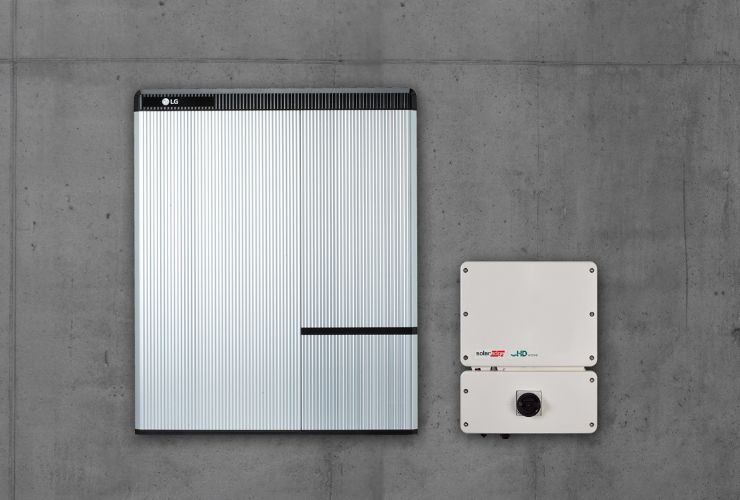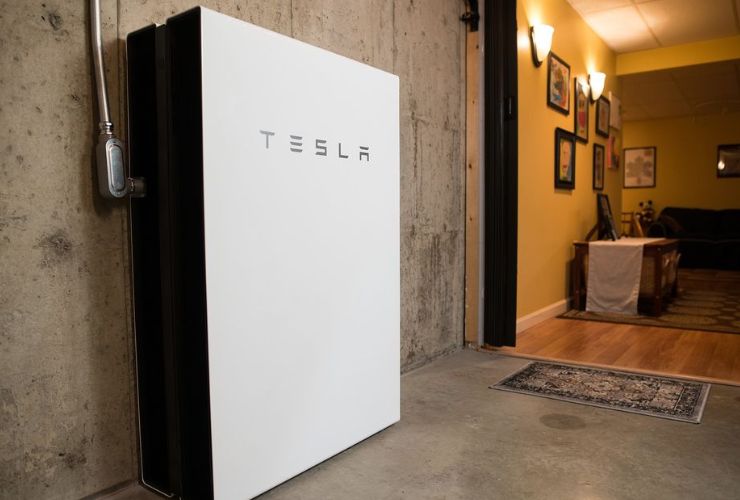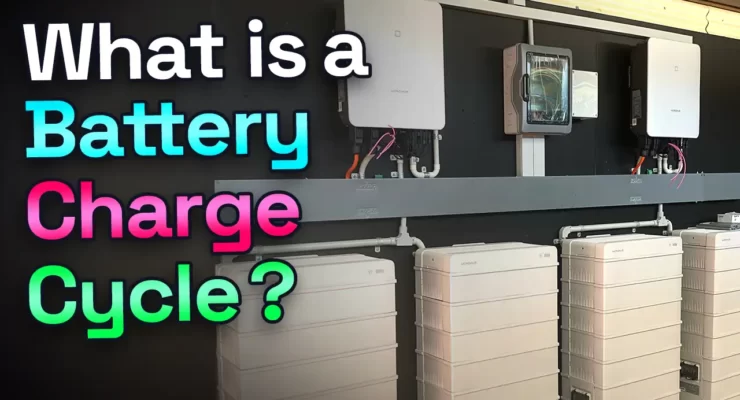Fast read
The use of solar battery storage and its impact on the environment has been an essential topic of discussion.
Several factors need to be considered when it comes to batteries. This includes the energy required to produce the battery, how it is utilised, and how it is ultimately discarded. Lithium batteries are the most common type used. They use a lot of energy, ranging from 60 to 310 kWh, which creates 170.2 Kg of CO2 emissions.
A smaller battery can pay for itself in 323 days when used daily. This is a better option compared to the current 526.9 gCO2/kWh from grid electricity.
Batteries can reduce the household carbon footprint and maintain the stability and strength of the electricity grid. However, too much solar energy entering the grid can cause voltage and frequency fluctuations.
What is the Environmental Impact of Solar Batteries?
This has been a debated question over recent years and is complex to assess accurately. Several assumptions need to be made when determining the environmental impacts of solar batteries and how they can affect the environment. The key considerations when looking at this are:
- The embedded energy in manufacturing the solar batteries;
- The environmental value of a solar battery in use;
- The solar battery’s end of life, if it is recycled, etc.
The embodied energy of a solar battery
Embodied energy is the energy used to make a product and the carbon emissions from making it. Several different battery chemistries are available with differing levels of embedded energy.
Also, as a general comment, CO2 is generated via different forms of electricity use. Our overall calculations presented in the FAQ are general assumption calculations rather than precise calculations without any variances.
Manufacturing the solar battery
The reality is that it does take a significant amount of energy to manufacture a solar battery. A fair difference exists in the calculation of embedded energy for lithium batteries across the industry. This varies per kWh of battery capacity from around 60 to over 310 kWh of energy consumption.
This may be partly because of how far back the assessment goes whether it is only considering the actual manufacture of the product or a complete “cradle to gate or grave” assessment. This includes all costs of mining, transport, manufacture, and end-of-life disposal.

Carbon costs of manufacturing
Assuming we investigate a 12 kWh solar battery. To make this product, 3720 kWh of electricity is needed, calculated by multiplying 310 by 12. We then need to convert the kWh needed to manufacture the product to kg of CO2 for an emissions calculation.
Recent assessments have assumed that the electricity used to manufacture the batteries is from coal. This creates approx—1 kg of CO2 per kWh of electricity generated.
If more than 3720 kWh of energy is used, it would create 3720 kg of CO2 per battery. In reality, the power grid uses a mix of generation types with different carbon costs.
To be more accurate, the calculation should reflect this. As most solar batteries are manufactured in China, we will use the carbon intensity figures from there.
According to Statistica.com, it was 549.29 gCO2/kWh in 2021. So, the amount of carbon emitted to make a lithium-ion solar battery is about 549.29 grams per 3720 kilowatt-hours. Giving us a total of 2043 kg of CO2 produced in manufacturing one home storage battery.
Is my solar battery sized correctly?
If the battery is sized efficiently, it should be fully cycled (used) every day. This means a 12 kWh battery will charge and discharge around 11 kWh. As one will always retain some charge to prolong its life.
In Australia, the carbon intensity of the grid-supplied electricity from Statisitica.com was 526.9 g CO2 created per kWh of electricity. The battery works with a solar system to capture renewable energy and replace coal-fired energy, helping the environment. Then the question is – how many days will it take for the battery to capture enough renewable energy equal to the CO2 it took to make the battery?
2043 kg of CO2 is produced to make the battery. This is equivalent to the CO2 produced from generating 3877 kWh of coal-fired electricity in Australia.
We established that the battery per day supplies 11 kWh. So it will take = 352 days to hold the electricity equivalent to the electricity required to manufacture the battery. In summary, a solar battery paired with solar power will offset its carbon footprint in less than a year of use.
This calculation nevertheless makes a huge additional assumption. The assumption is that we have a large solar PV system that generates 11 kWh of additional electricity to be exported daily. The system controls exports, saving 11 kWh of renewable energy sources with the battery.
How much CO2 do we generate per kWh
Most lithium batteries have a 10-year plus warranty and are expected to be used longer than the warranty period. So if we seek to calculate the battery’s carbon benefit, we must assume how long it will last. Then we can calculate the carbon cost per kWh of energy the battery uses.
As batteries degrade over their lifetime, even if we assume a 10-year lifespan, we can not simply say 11 kWh per day benefit x 365 days x 10 years is 40,150 kWh. So instead, let’s use 35,000 kWh of solar over the battery’s life to account for the degradation.
To generate 35,000 kWh of electricity in Australia in our current electricity mix. It would generate 35,000 x 526.9 g of CO2, which is 18,441 kg of CO2. The solar battery needs 2043 kg of CO2 generation to be manufactured. So the net benefit of the battery in CO2 reduction would be 18,441 – 2043 = 16,398 kilograms of CO2 avoided.
To look at it from another angle, 35,000 kWh over ten years is available to the household for the equivalent of 2043kg of CO2 generation. This is 58.37 g of CO2 for each kWh of electricity. This is only around 10% of Australia’s CO2 generated using conventional coal-fired electricity.
So from this perspective, the environmental impact of solar batteries isn’t negative. As long as they capture renewable electricity, which would not have been able to be used without a battery (export-controlled)

How are solar batteries affecting the grid?
The grid is struggling to manage the increasing amount of solar power being added. Also trying to maintain stability and strength. The growing and changing amount of solar power is causing difficulties for the grid. Too much solar entering the grid creates voltage and frequency fluctuations which can cause power surges, blackouts etc.
As a result, nationwide networks limit the amount of solar that can be sent back to the grid to maintain the system’s strength. This means solar electricity is wasted because it can’t go anywhere. In addition, the networks will require significant investment in the grid to manage the solar more efficiently. This will be both expensive and have its own carbon cost from the materials used etc.
The alternative is for homeowners to install batteries to store their self-generated renewable energy. Then use it on-site, increase their self-sufficiency and reduce the household’s carbon footprint.
Importance of solar batteries for our future
Suppose the grid is to increase the penetration of renewable energy further and eliminate fossil fuels. The electricity entering the grid needs to be dispatchable/ controllable. Therefore, batteries become increasingly essential to store solar electricity to be used when required in the home. But also to be able to be sent back to the grid when needed (and potentially get paid for this with a VPP).
Solar batteries will be more important in moving to a fully renewable electricity grid, making them more valuable for the environment.
However, if you install on-grid batteries, you will not instantaneously cut world emissions in half. People are purchasing batteries to get ready for the future. When they buy them, they believe they are helping to reduce emissions in the future.
Solar battery recycling
An estimated 11 million tons of lithium-ion battery waste is expected by 2030. This means that significant investment funds are required to improve the economies of battery recycling. Otherwise, they will be placed in landfills and pose a harmful threat to the environment even after they are helpful.
Solar batteries can also negatively affect the environment if they are not recycled. However, lithium batteries are recyclable at the end of their useful life. The various precious metals, including lithium, cobalt, nickel, copper etc., can be broken down from the batteries to be reused. The simple fact is that until now, the volume of lithium batteries to be recycled has been low because it is a new battery technology.

In summary
While the calculations above are general and simple, with some assumptions, overall, they are valid. Batteries do and will have a positive impact on the efficiency of the home. As well as the grid in the transition to a 100% sustainable electricity grid.
Sadly, most of the world still depends on fossil fuels. Almost everything you buy has a significant carbon footprint because of CO2 emissions from making and transporting it.
Batteries are no different. Manufacturing emissions from batteries will decrease as the globe utilises more renewable power and recycled materials.
Batteries combined with solar will be able to aid us in becoming more independent from the grid.
So to answer the question, the environmental impact of solar batteries occurs in production and end-of-life. They can benefit the environment by reducing our dependence on a coal-power-generated electricity grid.



